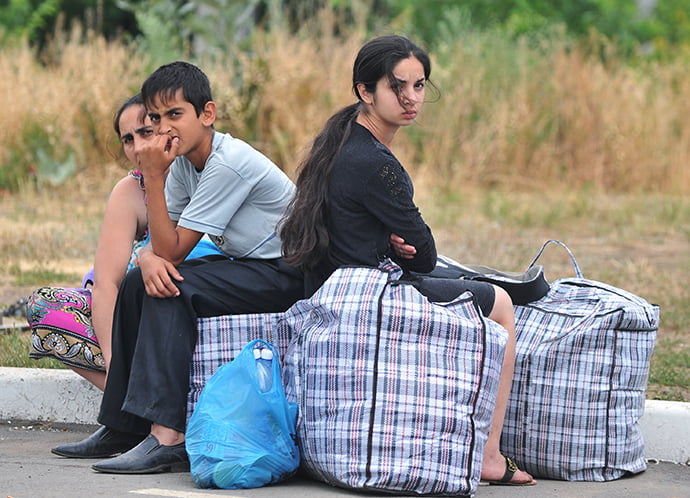As fighting between the government and pro-Russian rebels continues in Eastern Ukraine, displacement from the conflict is reaching new heights. By October, UNHCR estimated that more than 800,000 people have been displaced, representing the largest displacement of people in Europe since the Balkan wars. It is the latest refugee crisis in a year that has seen several, and is stretching resources thin.
In many ways the displacement mirrors the conflict itself. Of those internally displaced within Ukraine, 95% come from the conflict ridden regions of the east and have fled to government-controlled Western Ukraine. Meanwhile an estimated 387,000 Ukrainians have applied for refugee status or residence in Russia, although the total number of Ukrainians in Russia is unknown as a visa is not needed to travel between the two countries. As the conflict drags on, the lines between the two sides remain and stretch into those most vulnerable.
Unfortunately it comes at a time when the resources of the international community are already stretched thin by refugee crises in the Middle East and Africa. Significant funding shortfalls already threaten key programs for the displaced from Syria in Iraq as winter begins and UN aid agencies are struggling to meet demand for assistance arising from conflicts in Northern Nigeria, Central African Republic, South Sudan, Mali and Libya. In this context, the crisis in Ukraine comes at the worst possible time for those trying to address the needs of the displaced.
The Ukrainian government is trying to do its part in helping out the displaced. A new law on IDPs passed by parliament last month creates a special registry for the displaced to help track those forced to leave their homes and match them with needed social services. The system aims to limit the bureaucracy IDPs face in trying to access aid and services, as well as meets several requests from the UN and EU to facilitate further international aid such as not taxing foreign financial assistance. In return, the EU is looking to ramp up assistance through its Support to Ukraine’s Regional Development Policy that issues grants to local municipalities for IDP aid and rebuilding efforts in cities damaged through the conflict but now fall under government control.
Nonetheless, despite pledges for assistance and the non-discrimination clause included in the new IDP law the displaced continue to face difficulties in gaining housing and employment. As is often the case, the warm welcome that IDPs first experienced in other regions has cooled as the burden of their care and the conflict wears on. The continued politicization of the conflict is also taking a toll as citizens of Eastern Ukraine are increasingly seen as interchangeable with the pro-Russian rebels, an attitude that leads to discrimination and the ostracizing of those who have paid the biggest price for the conflict so far. As existing communities are increasingly turning away IDPs, the government is rushing to build townships for IDPs to settle in, hopefully before the cold Ukrainian winter sets in.
There are several other refugee crises in the world, many of which are larger than Ukraine. But the displacement crisis still poses a serious political and economic problem for Ukraine and an overwhelmed international aid community. As the conflict drags on, the number of displaced will increase even as the will – and the means – to help them shrinks.
